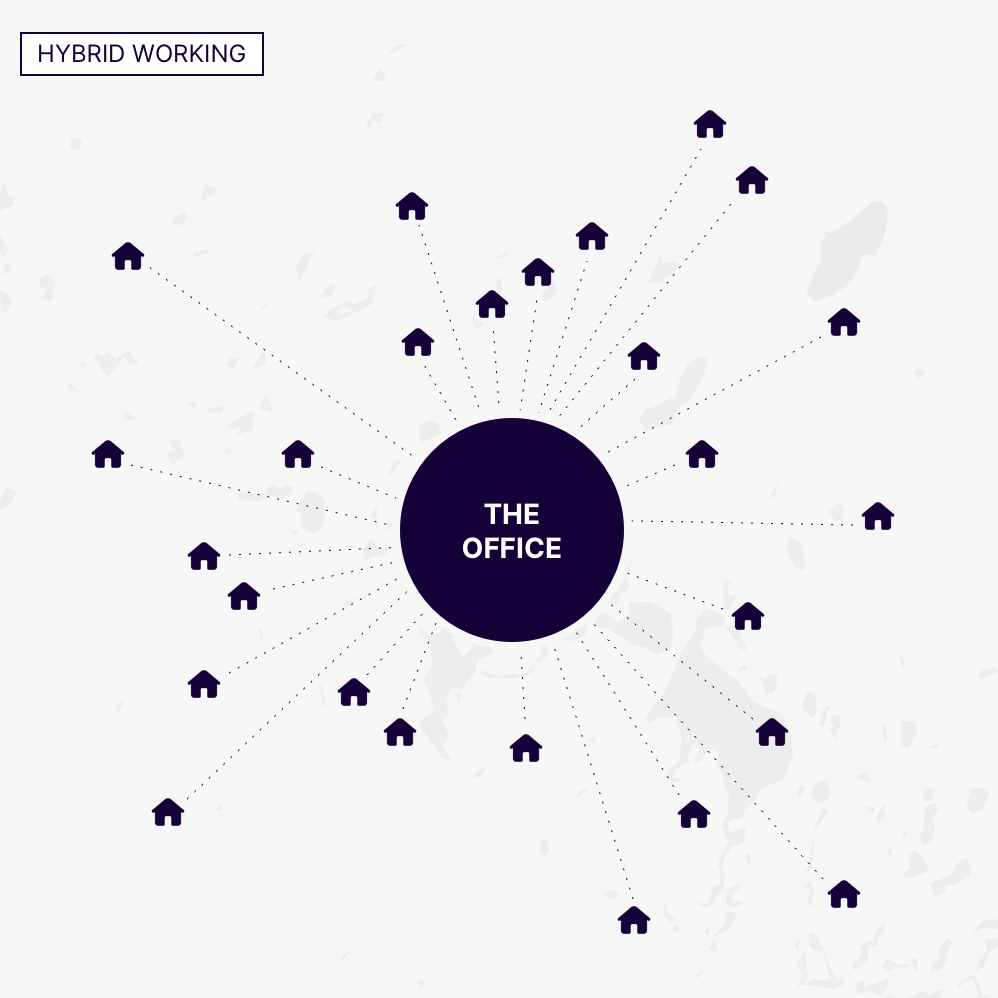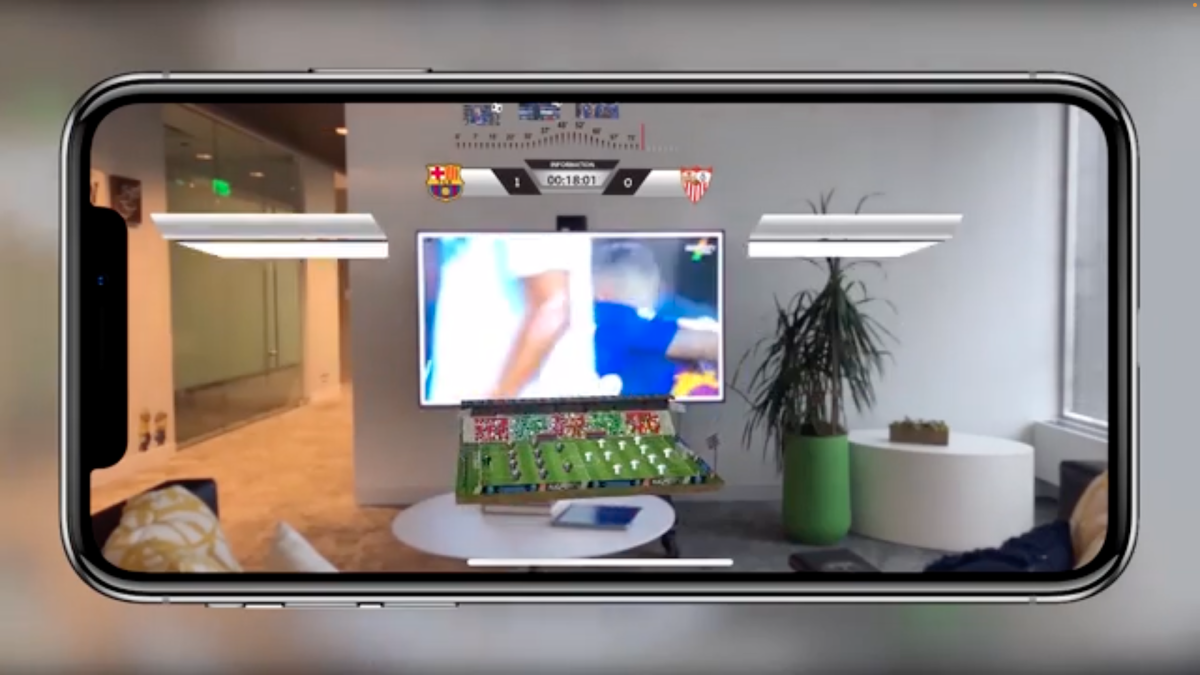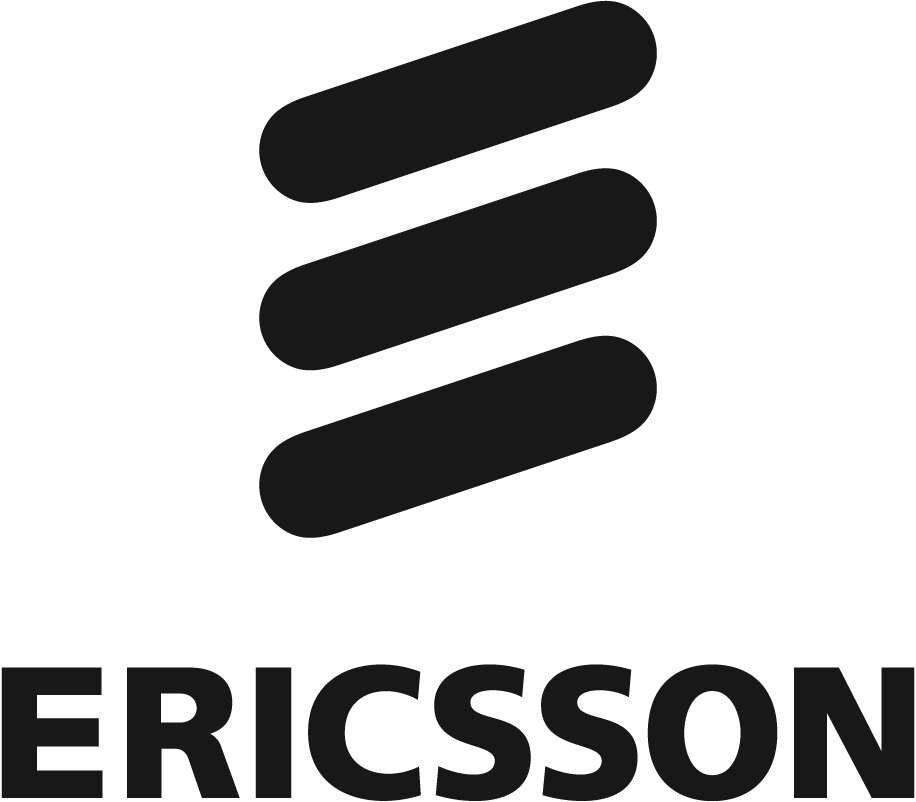All Data, Everywhere, All at Once: Can 5G Create the Perfect Future Workspace?
Originally published by Ericsson
- The rise of new hybrid working, hub working, and networking models are raising demands on employers to make the workplace more experiential, human centric and activity based.
- 5G-enabled zero energy devices will make it possible to deploy up to 10x more sensors in the workplace – creating a massive data mesh that enables hyper-personal human building interaction through technologies such as extended reality, human insight AI and digital twins.
When was the last time you thought about quitting your job?
Last year in the US, a record fifty million people called time on their jobs for good, and many more worldwide.
For many, the seeds for this ‘big quit’ were sowed throughout the pandemic – where in many cases the pressures of work and home didn’t just blur, they collided.
The fallout has shaked today’s workplaces to the core. While the word ‘burnout’ has increased by 100 percent on Glassdoor in the past two years alone, a global ‘quit-tok’ trend has raised concerns over employee mental health and a growing ‘she-cession’ in the workplace. Much of this may be anecdotal, but the numbers are not: following the pandemic, women were three times less likely to regain lost jobs in the US labor market compared to men.
These statistics are no trend or coincidence. They are systemic flaws in a workplace model that has not kept pace with post-pandemic labor market demands. Such traditional models need structural change to meet the needs of today's and future labor markets, as well as laying a runway for business growth.
New hybrid-, hub-, and networking-based models are the foundation to make that happen. Today, the first step to hybrid working models is slowly taking place across employers, with 39 percent of global office workers expected to work hybrid by the end of 2023, and as many as 71 percent in the US.
But that’s not all that’s needed. With those fundaments in place, businesses can begin to break free from the office and redefine their future workspace and employee experience – enhanced by hyper-personal human building interaction and supported by real-time data.
On the technology side, the high-performance capabilities, deployment agility and multi-compute possibilities of mobile networks – combined with the massive scale of tomorrow’s low- and zero-energy devices – will power this evolution.
Together with other key technology domains of AI, extended reality, and digital twins, future workspaces will present massive innovation opportunities for network API developer ecosystems in coming years.
Workplace-as-a-service business models
Once upon a time, workplaces were no more than a service industry. Good climate, comfort and working conditions were all that mattered, and benchmarks had a focus on time well saved.
Today’s massive decentralization of workspaces is taking the workplace deeper into the experience economy, where time well spent is the new measure of success. As such, achieving gravity in this new reality and making workplaces relevant to the new employee experience will require the metamorphosis of traditional office spaces into activity-based, human-centric experience centers.
This evolution is opening new business models such as office-as-a-service and pay-per-experience, both of which will form a pillar of future workplace strategies. This goes hand in hand with other pillars such as remote collaboration tools through metaverse workplaces, and new international no-entity hiring structures. When applied in unison, employers can create a truly human-centric and global workplace.
All of this will open a myriad of challenges, but also opportunities. For example, when an employer brand is no longer manifested in a physical workplace, it becomes the sum of its various other parts. Instead, there will be new opportunities to ensure employee wellbeing, work-life balance, and empowerment in entirely new ways.
The human-centric workplace experience
So how does an activity-based, human-centric workplace look?
In many ways, think of it as an amusement park. From the moment you walk in the physical surroundings should create an experience that’s based on the realms of education, aesthetics, entertainment, and escapism.
Enhanced by hyper-personal human building interaction, the experience should be designed to influence how you feel, think and behave in a way that is tailored and connected to your health and work-life. Such an experience will be essential in bringing a stronger sense of belonging to the workplace, connecting employees closer to the employer brand.
For Vasakronan, connecting the individual with a measurable experience has always been the driver since we started to turn our buildings into knowledge graphs and real time data collectors. There are many challenges still yet to overcome, particularly in terms of ecosystem maturity and data privacy, but the innovation opportunities are already shaping up to be nothing short of groundbreaking.
The innovation cycle is still at a development stage, and the scale is not quite there, but there are instances where future workplace technologies are already beginning to break the commercial mainstream, such as human insight AI and various metaverse platforms. This includes Smarteye and TSX Entertainment, two of our speaking partners at Vasakronan who both offer a glimpse into the possibilities which will be unlocked within these areas in future.
5G and massive zero-energy sensor deployment
5G is the underlying innovation platform that makes all this possible.
Today, a Vasakronan real estate can feature tens of thousands of sensors and controllable devices, and that number is increasing every day. Each sensor streams real-time data into a central operating system – ProptechOS. This is an independent data layer that also includes building information modeling- (BIM) and business data. The enabler is the open source leading standard for smart buildings, RealEstateCore and Brick Schema, that enables us to deploy a wide variety of ready-made applications from different vendors. The data is not only used for co-working but also for a multitude of applications such as automated ESG-reporting, electrical grid demand/response, AI-based indoor climate optimization, and facility management.
We use digital twins, building management systems (BMS) and IoT data to create more efficient building maintenance based on influencing factors such as utility consumption data, availability, people activity and weather forecasting.
Today with 5G and its resilient, high-throughput connectivity, as well as extreme agility and minimal-intrusion when it comes to both indoor and outdoor deployment – there are very few limits to what is possible when it comes to redefining and reconceptualizing the workplace. This is thanks to new technology capabilities of massive device-to-device communication, multi-cloud and multi-edge compute, and use cases such as augmented- and virtual reality, live 4K streaming, and even holographic communication all available within the next decade.
This toolbox will open new worlds of smarter experience solutions, including better and more personalized service solutions based on massive real-time data collection and compute – designed for the needs of each employee, and virtual metaverse workplaces where employees can meet, interact, and collaborate remotely.
With a such a data mesh now a possibility through a ubiquitous data flow from more dynamic and agile sources, this heightens traditional challenges of connecting, gathering, structuring, and making data available to extract from BIM, BMS and massive device deployments. For this, moving from ego-systems to eco-systems will be crucial – which means ensuring an open data exchange between verticals for real, as well as working to overcome data privacy challenges.
Scaling up sensor deployments will also be crucial. For example, achieving a fully immersive metaverse workplace will mean scaling from thousands to potentially millions of workplace sensors.
And with scale also comes a new focus on cost and sustainability. This is where the evolution to low- and zero-energy devices will be a real gamechanger – offering low maintenance cost, low emissions costs, and even low component cost.
For example, if we look at the cost of a tracker sensor today, most of it is driven by the cost of the battery and GPS component. Removing those costs through energy harvesting and 5G positioning technologies would open a new world of scale and innovation possibilities.
What is zero-energy IoT (ZE-IoT)?
ZE-IoT means that such devices will not need battery replacement or manual recharging of the battery. Ericsson Research are particularly interested in relatively capable devices that can be used in the wider area for direct connection with base stations in the 6G network.
The next steps for change
Transformation such as this doesn’t happen overnight. While the winds of change are certainly blowing across office spaces today, we must also be realistic that change takes time.
By the end of this year, 61 percent of employees worldwide will still be working 9-5 at the office – which is a big number.
And even on the technology side, there are many questions still to be answered. First and foremost, the industry needs to develop solutions that can bring value to the data, an area where open network APIs can play a pivotal role.
Cross-vertical collaboration will also be key to unlocking innovation possibilities. As an example, Vasakronan is working more with startups from other verticals who we know are faster and more agile, can offer new perspectives and are willing to take more risks than traditional property owners.
As a final note, let’s not forget why the 9-5 workplace needs a reboot. Aside from growing pressures to make workplaces more sustainable, productive and cost efficient – future workforces increasingly look for employers that care about their wellbeing and mental health. Burnout, quiet quitting and, in a lot of cases, very loud quitting are all at very high levels among today’s younger employees. Today, we have more opportunities than ever to change that; to improve employee wellbeing, improve collaboration, make the workplace more human-centric.
We spend an average 1716 hours at work each year, and life will always be too short to spend it in a job that makes you unhappy.
Explore more
Explore key insights from Ericson’s latest Consumer & IndustryLab report: How flexibility and technology are changing the way we work
Listen to the podcast: Reimagining the future of work
Read Ericsson’s dematerialized office report
Read the blog post: The meaning of quiet quitting
Read the blog post: Why a dematerialized future is worth striving for






